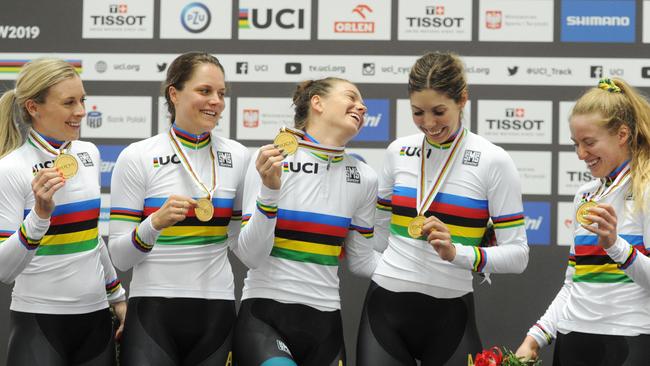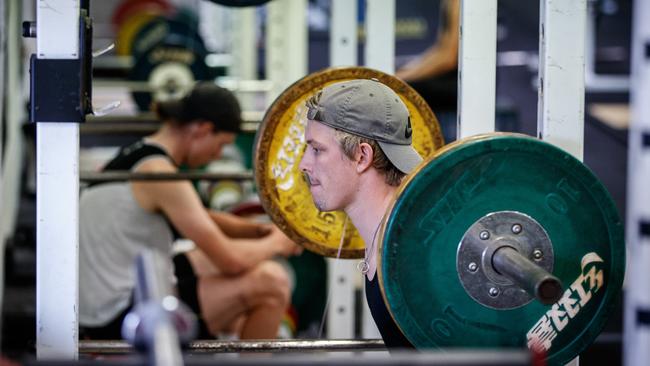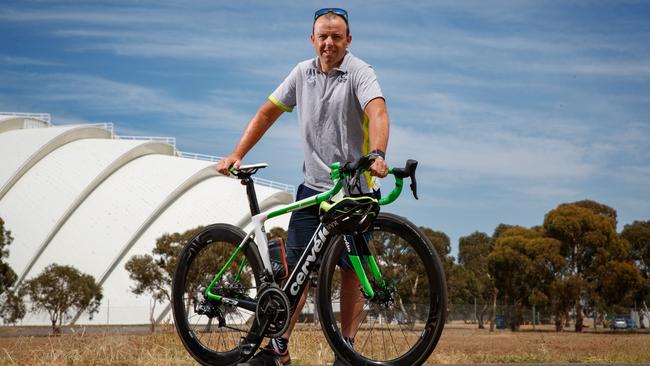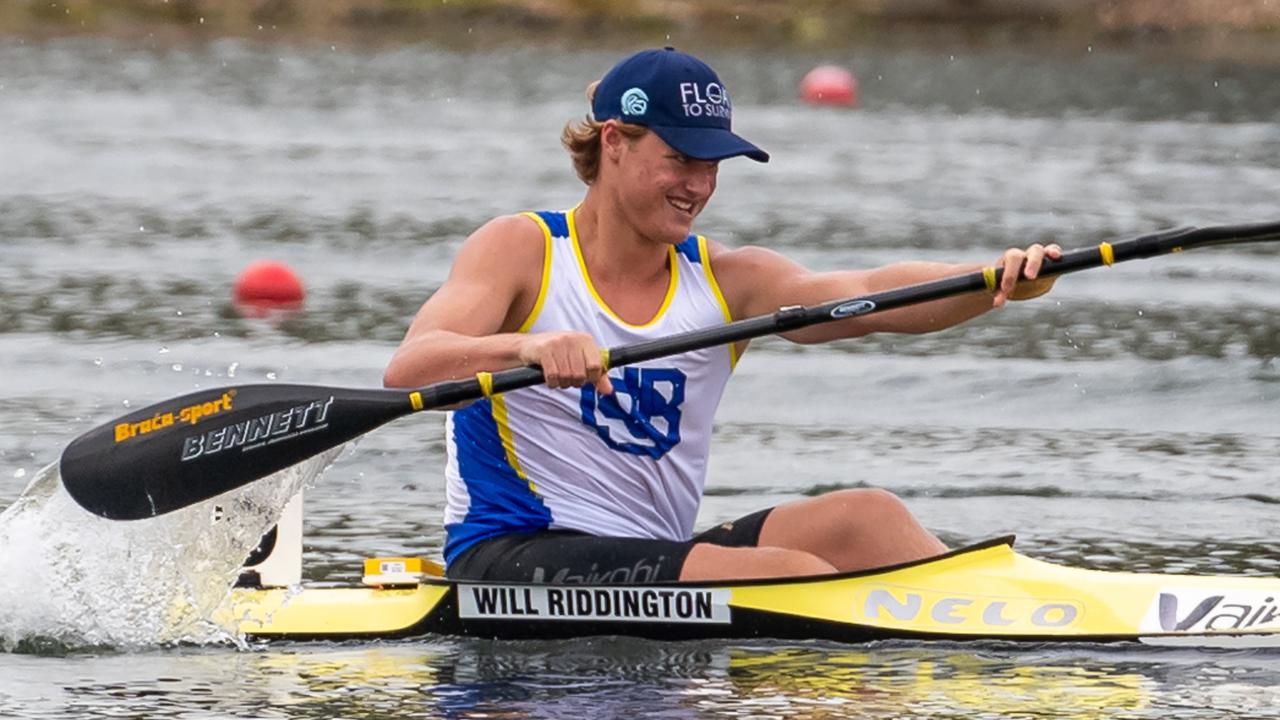Inner sanctum: Inside Australian cycling’s track endurance meeting with one year to Tokyo Olympics
With 12 months to the Tokyo Olympics, Reece Homfray goes inside a team meeting with Australia’s track cycling world champions. Read the exclusive story and watch the video.

Olympics
Don't miss out on the headlines from Olympics. Followed categories will be added to My News.
Six letters written in capitals on a whiteboard pose the million dollar question for Australia’s track cycling world champions 12 months out from the Tokyo Olympics.
‘WWITTW’.
That stands for ‘what will it take to win?’
Australian cycling has been trying to answer that very question for the best part of 10 years having won just one Olympic gold medal since 2008 - and that was Anna Meares in London in 2012, and she’s now 35 and very much retired.

The whiteboard is at the front of a meeting room at the SA Sports Institute headquarters in Adelaide and to get there the men’s and women’s team pursuiters walk up one flight of stairs where staring them in the face when they reach the top are the Olympic rings in a glass frame.
Both team pursuit squads are the reigning world champions and between them they’ve won the rainbow bands seven times since 2012, but the Olympic prize has eluded them - and now it’s driving them.
The riders file in and sit in two rows waiting for the meeting to start. Amy Cure, Ashlee Ankudinoff, Macey Stewart, Annette Edmondson, Georgia Baker and Kristina Clonan from the women’s team while Alex Manly was overseas, and Leigh Howard, Alex Porter, Sam Welsford, Kelland O’Brien and Cam Scott from the men’s.
They both won the world title in Poland in February and the men’s team pursuit has broken the world record twice in the past 12 months. But they have only two Olympic medals (Sam Welsford’s silver in 2016 and Annette Edmondson’s bronze from London in 2012) and only five of the 10 in the room were even at the last Olympics in Rio in 2016.
Since then, Australia’s track endurance program has been re-built from the ground up and for the first time the men’s and women’s programs have merged.
They have the same coaches, the same training, are on the same schedule with the same routine, share the same flights, same accommodation and importantly - the same goal which is being driven by head coach Tim Decker who stands at the front of the room.
To his left is a projector and to the right a table with apples, bananas, almonds, crackers, beetroot dip and juice.
“Is this going to be a long one?” one of the riders asks.
“It won’t be short, so settle in, but it’s a pretty important day and I really want you to switch on because we have put a lot of work into this,” Decker replies.
Decker opens the meeting by asking if anyone has any feedback from the past six weeks which has included altitude and gym training as they prepare for their European block of training and racing mid-year.

Porter, who is the men’s team pursuit starter, is the first to speak.
“I don’t think there’s been enough communication,” he says bluntly.
“Not enough information around ‘why are we doing this’.”
Decker isn’t taken aback but nor does he ignore the question.
“OK, that’s fair, maybe we weren’t clear enough” he says.
“But you can also ask for more information if you don’t understand something.”
The discussion continues for about five minutes as they find a solution before moving on.
“Any positives to talk about?” Decker throws to the room.
“Maybe Amy (Amy Cure) for spending 24 hours a day in her altitude tent,” Welsford says which draws a laugh from the room.

When they’re not on their bike, in the gym or in meetings, the riders are trying to spend as much time as possible in their altitude tent to prepare their body for the next big block of training. They are logging their progress and Cure is on top of the leaderboard.
They then discuss values. The women’s team has a slightly different list to men’s team but they think it is possible to keep aligned as long as they each understand what the values mean to each group.
They discuss social media, what they think is fair to post as a collective team. Clothing, key dates, the trip to Europe, sports science, nutrition and do a comprehensive breakdown of target times kilometre by kilometre, lap by lap of what they want to ride leading up to Tokyo.
Life issues, injuries, illness and crashes are also on the agenda.
“Understand that we know, we are human and we are available to talk to help you,” Decker said.
When the room falls silent, Decker then cuts to the chase.

“When I think about Tokyo my mind goes to day two,” he says.
“I picture the men riding round one of the team pursuit and the women riding the final.
“And why I go to day two is because I have this vision of you guys absolutely nailing everything and racing for gold.
“I think about all the work we will have done in the lead-up and if you nail your training, nail your preparation and nail your race and get it all out, and at the end of the day we’re beaten by a better team, then you will have inspired each other and made Australia proud.
“But....” Decker adds with a long pause.
“I know you can both win this. The power you need to be successful is in this room and I want us to inspire each other.
“This process started a long time ago. To be truthful I put a proposal in to (previous high performance manager at Cycling Australia) Kevin Tabotta to align the two squads not long after Rio.
“I want the teams to see each other nailing their swings and railing the splits in training every day and then on race day and say ‘right, we can do that too’.
“So have day two in the back of your head because that’s where it sits for me, I think about it every day.”
When the discussion goes back to altitude, gym programs and nutrition it then turns to what gear ratios they will ride, how many turns they’ll do and what times they will be expected to produce.

“What are you laughing at,” Decker asks Porter who is sitting in the front row.
“The gear,” Porter said.
“You laughed last year and you did it.” Decker replies.
Next to Porter is O’Brien with his mop of long curly hair covering his shoulders, Welsford who in his grey, baggy hoodie looks like a goofy teen but is a four-time world champion at the age of 23 and has 3:49.806 tattooed on his right ankle as a reminder of their world record ride at the Commonwealth Games.
Then there’s Cam Scott who barely says a word from under his cap and Howard who asks most of the questions from the back row.
While so much focus is on the next 12 months leading into Tokyo, the meeting included talk of what would happen afterwards as well.
Cycling, like swimming, has a track record of athletes conquering the mountain or at least scaling it, only to fall off the other side and never to return to the sport again.
“We don’t want you to disappear off the face of the Earth regardless of whether you’re planning on having a break from cycling,” Decker said.
“And remember you are leaders, so what sort of impact do you want to have on riders in our academy or juniors who look up to you?
“What sort of legacy do you want to leave on this program for the people coming through?
“We’ve got a great group of people here who should consider that because you have a bigger impact than you think.”



